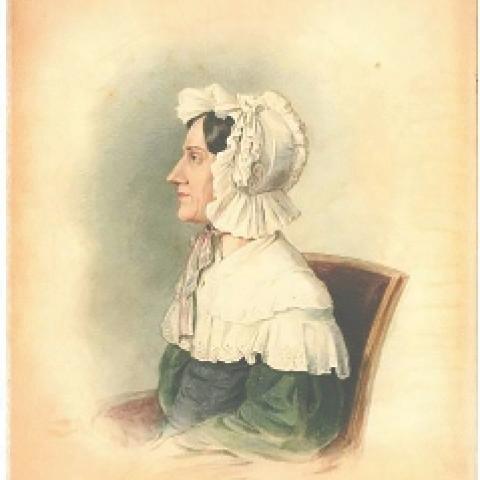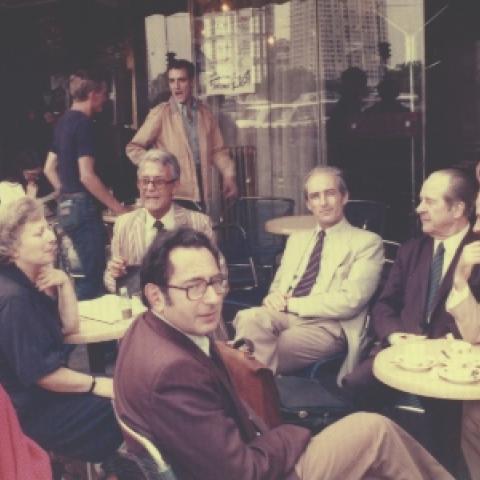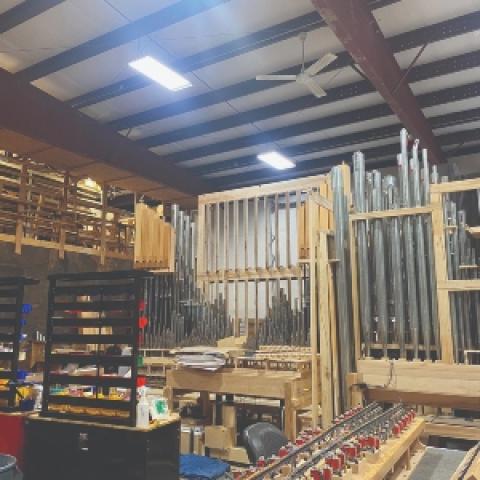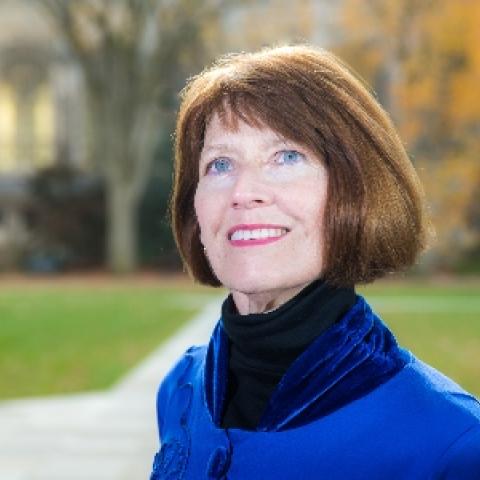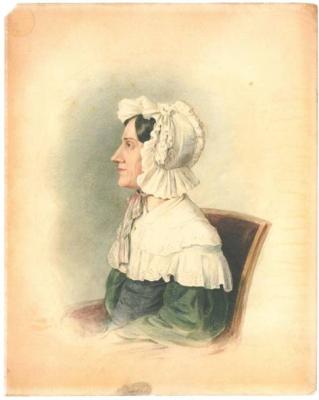
“All the news that’s fit to print”
In 1897, Adolph Ochs, owner of The New York Times, created the slogan that still appears on the masthead of the newspaper. As I write, we are steaming toward the mid-December deadline for submissions for the February issue of The Diapason, nearing the end of the wildest of all news years. It has been a year during which it was important to print a lot of news that was barely fit to print, and I have had my nose, by way of touchscreen, in the NYT pretty much every morning. Along with the daily horrors of the Covid epidemic and political turmoil, I have been grateful to the NYT for keeping the true wonders of the world in our minds. On November 6, 2020, the NYT published an article by Patricia Morrisroe under the headline, “The Woman Who Built Beethoven’s Pianos.” Nannette Streicher was a hands-on craftswoman, an engineer, and a musician who helped transform the piano from its original delicate form as virtuoso techniques were developed, and her prominence in a male-dominated trade in a male-dominated society is a striking story. You can find the article at nytimes.com/2020/11/06/arts/music/beethoven-piano.html.
Innovators: the chicken . . .
Pipe organ builders have always been innovators. Aristide Cavaillé-Coll and Ernest Skinner are two examples of builders whose mechanical and tonal innovations were so dramatic and wide-reaching that they inspired generations of musicians. Without Cavaillé-Coll, we would not have the music of Franck, Vierne, Widor, and Dupré, and countless of their contemporaries. Without Skinner, Lynnwood Farnam would have been limited to a few mechanical composition pedals, and his ingenious development of symphonic playing and orchestral transcriptions might never have happened.
. . . or the egg?
The piano was invented around 1720, and in its early years it was a gentle instrument, comparable in power to the harpsichord from which it evolved. Part of Mozart’s genius was to define the soul of the piano barely fifty years after its invention, exploiting the instrument’s fluid and expressive qualities. And fifty years after the invention of the piano, Beethoven was born. His progressive, even aggressive approach to the piano ushered in a new tradition of virtuosity, and the piano would never be the same. While organbuilders provided challenges and inspiration to musicians, it was composers and pianists who made demands of the instrument, challenging the builders to keep up.
Nannette Streicher (1769–1833) was the exact contemporary of Beethoven (1770–1827). Her father, Johann Andreas Stein, was a piano maker in Augsburg, Germany, and she took to the piano as a young girl. “At the age of eight, Nannette played in front of Mozart, who criticized her posture and grimacing, but admitted she had ‘genius.’ Two years later, she had mastered many of her father’s piano-building techniques, earning a reputation as a mechanical wunderkind.”1
In an age when it was unusual for a woman to succeed professionally, Nannette Streicher was one of the most important figures in the development of piano making. After her father’s death in 1792, when she was twenty-three years old, she moved the company to Vienna where the musical action was. Her new husband Andreas assumed the role of managing the correspondence and finances of the business, and Nannette took her younger brother Matthäus as a partner, changing the name of the firm to Geschwister (siblings) Stein.2 Nannette and her brother had a falling out and formed separate firms. While Matthäus claimed the family name for his nascent business, Nannette cleverly named her company Streicher neé Stein. Comparatively little was heard of Matthäus Stein after that.
Nannette had met Beethoven in Augsburg, and after she arrived in Vienna, they began a collegial relationship when Beethoven used her pianos for his concerts. After one concert, Beethoven commented to Andreas that the piano “was too good for him, because he wanted the freedom to ‘create his own tone.’ In a follow-up letter, he complained that the piano was still the least developed of all the instruments and that it sounded too much like a harp. Taking an obvious swipe at the composer, Andreas Streicher wrote an essay describing an unnamed pianist as a brutal murderer at the keyboard, ‘bent on revenge.’”2 Ouch.
Beethoven’s comments must not have been lost on Nannette. She was not only a brilliant craftswoman, but a creative innovator as well. She added an octave and a half to the keyboard range of her father’s pianos, which illustrates her prowess with the scaling and tension of strings and the other minutia of piano engineering. In the first decade of the nineteenth century, pianists were taking their performances out of salons and performing in concert halls that sat hundreds of people. Her father had invented what became known as the “Viennese Action,” in which the hammer head pointed towards, rather than away from the player, allowing the advance of an escapement action (a sort of slingshot device that allows the hammer to fling toward the string). Nannette refined the action, changed the dimensions and thickness of the soundboards, and increased the heft of the instruments’ frame and case, working assiduously to create instruments that were up to the demands of advancing keyboard technique and the size of concert venues. Now when Beethoven wanted to summon up a roar, the piano could deliver it.
Meanwhile, another performer, Friedrich Kalkbrenner (1785–1849), introduced lightning-fast passages of octaves in both hands. Mere mortal keyboard players marvel at the spectacle and sonorities of modern artists playing on a modern piano as they thunder in octaves to the climax of a concerto by Saint-Saens or Rachmaninoff. As an instrument builder, I can imagine the bewilderment of an early eighteenth-century piano-maker witnessing someone doing that for the first time, the force of the entire body poured into the piano. “Whoa, whoa, you’re going to bust it!”
Nannette Streicher was the pioneer in transforming Mozart’s silvery and light-touched piano toward the versatile powerhouse we know today, capable of taking just about anything a human body can exert, the sonic equal to modern decibel-rich symphony orchestras. Pianists of the early nineteenth century were demanding more of their instruments, often to the point of damaging them as they played. This recalls the legend about Franz Liszt (1811–1886), the demon musician of the following generation, who beat his pianos so hard that he kept a second piano backstage for the second half of the concert. In 1812, Streicher built a 300-seat concert hall adjacent to her workshop, a long jump from the intimate salons that Mozart knew, and as the capacity of concert halls expanded toward a thousand seats in the ensuing years, she tweaked and strengthened the designs of her pianos, producing over fifty instruments a year and earning the reputation among some of the most admired musicians as the best piano maker of her time.
Innovation by replication
During the twentieth century, composers like Debussy, Stravinsky, Schoenberg, and Stockhausen were inventing new musical languages at a rapid rate. As the century progressed, many musicians delved deeply into the study of early music and how the progression of musical styles related to the development of the instruments.
Wanda Landowska (1879–1959) was one of the first twentieth-century musicians to advocate the performance of early music. She recorded Bach’s Goldberg Variations in 1933, playing a harpsichord built by the French piano maker Pleyel, an instrument similar to that displayed by Pleyel at the Paris Exposition in 1889. Pleyel harpsichords were built with steel frames and sturdy cases more like a modern piano than a harpsichord, but Landowska’s energetic playing enthralled musicians and led to the modern active industry of harpsichord making.
Alfred Deller was the first modern countertenor and a champion of early vocal music, especially that of Purcell. As a boy, he sang in a church choir in his hometown of Margate, England, and musically defied puberty by simply continuing to sing in the treble range after his voice changed. He formed the Deller Consort in 1948, gathering singers and instrumentalists to perform music from as early as the thirteenth century. His distinctive vocal tone was a revelation, and his interest in early music inspired generations of musicians.
Nikolaus and Alice Harnoncourt founded Concentus Musicus Wien in 1953. This was an ensemble of musicians playing on period instruments backed by extensive research into the methods of performing in earlier centuries.
E. Power Biggs played a weekly radio program from the Busch-Reisinger Museum (now Busch Hall) between 1942 and 1948, performing on an experimental “classic” organ built by Aeolian-Skinner. He brought the now iconic Flentrop organ to the same hall in 1958 and by 1961 was flooding the market with multiple volumes of Bach Organ Favorites recorded there, still regarded as the best-selling series of solo classical albums in recording history. His recording The Golden Age of the Organ celebrating the organs built by Arp Schnitger (1648–1719) was released in 1963 and was followed by another multiple-volume series of historic organs of various European countries.
As musicians dug into the study of early music, a parallel study of period instruments was essential. Organbuilders like Charles Fisk, Fritz Noack, and John Brombaugh started building organs according to ancient ideals and principles. They traveled Europe to study and measure the important organs and applied their new knowledge to the instruments they were building. Harpsichord makers like Eric Herz, William Dowd, and Frank Hubbard brought the modern revival of the harpsichord from the battle-ready Pleyels to respectful copies of the lively and delicate instruments played by Renaissance and Baroque musicians.
Philip Belt was the first to commit to building replicas of early fortepianos. He apprenticed building harpsichords with William Dowd and Frank Hubbard while feeding his fascination with early pianos in a basement workshop. He started a pianoforte workshop on a farmstead in Center Conway, New Hampshire, and purchased a hearse for transporting pianos. His instruments were first used in concert at Harvard University in the mid 1960s, and in 1969 Belt loaned his copy of an instrument by Dulcken for use in a concert at Cornell University played by Malcolm Bilson, who immediately ordered one for himself and became an energetic champion of Belt’s work and the revival of the fortepiano. In 1987, John Eliot Gardiner and the English Baroque Soloists recorded a complete cycle of Mozart’s piano concertos with Malcolm Bilson, Robert Levin, and Melvyn Tan dividing the keyboard duties on a piano built by Philip Belt. Christopher Clarke (British, living in France), William Jurgenson (American, living in Germany), and Rod Regier of Maine are among those following Philip Belt by building replicas of early pianos today.
Generations of women
Nannette Streicher became a sort of personal caretaker for Beethoven, managing the details of his household and enabling his later great compositions. The organization she brought to his personal life and the ever more powerful pianos she built enabled the composition of his blockbuster Hammerklavier Sonata in 1818 and the Diabelli Variations, written between 1819 and 1823, a bewildering hour-long set of thirty-three variations. Nannette Streicher died in 1833, and the firm “continued to thrive under her son, Johann Baptiste, and then her grandson, Emil, who built pianos for Brahms. When Emil retired in 1896, the company closed.”3
§
After reading Morrisroe’s article, I wrote to my friend Laurence Libin, retired curator of musical instruments for the Metropolitan Museum of Art in New York City. I knew that the Met’s collection included at least one piano built by Nannette Streicher, and I thought I would get some goodies from him. And so I did, in the form of an introduction to Anne Acker, the harpsichord and piano maker featured toward the end of the article as having completed a replica of an 1816 Streicher six-and-a-half-octave grand piano started by Margaret Hood, which was pictured in the article. (See Anne Acker’s article, “The 2014 Ivory Trade and Movement Restrictions: New regulations and their effects,” The Diapason, September 2014, pages 28–30.)
Margaret Hood (1937–2008) grew up in Greenwich, Connecticut, and was an accomplished painter and prodigious equestrian. She became interested in instrument building in the early 1960s, building harpsichords from kits, first for herself, and then to be sold to others. Her interest expanded to fortepianos as she studied historic instruments in museums in Europe and the United States, and she founded her company to build fortepianos in Platteville, Wisconsin, in 1976. Within ten years she was renowned for building copies of instruments built by Nannette Streicher in 1803 and 1816. Margaret Hood was also a prolific researcher, and at the time of her death was working with the more than sixty letters written by Beethoven to Streicher regarding the details of running his household.
Anne Acker studied the piano from the age of four, and by the time she was a teenager playing the music of Scarlatti and Bach, she felt frustrated by the instrument and had the sense that something was missing. While in high school, she was learning Bach’s Italian Concerto and happened to pick up a recording of the piece played by Igor Kipnis on a harpsichord. As she put it in our lengthy phone interview, “That was my first ‘a-ha,’ someday I will have a harpsichord.”
When her children were little, she joined a group of amateur musicians that gathered monthly to play for each other. One of the guys had a Zuckermann harpsichord, and at one of the meetings, Anne played the Italian Concerto on it. When she finished, he said, “Take it home, Anne.” “Oh Jack, don’t be silly.” She ran into Jack at a bookstore a month later, and he asked when she would come to get the harpsichord. The second time she ran into him, she relented. It needed some work, so she made some phone calls, got her hands on some materials, and did the work. Anne spoke of her father with gratitude and admiration, saying that he had instilled in her a love and understanding of tools and things mechanical, and that she had been able to draw on his lessons to make the little harpsichord sing better.
Trevor Stephenson, a student of Malcolm Bilson, came to town to play a recital on his copy of a Stein piano built by Tom Ciul. Anne fell in love with the instrument, and through him met Margaret Hood a few months thereafter. Later she and Stephenson debuted one of Hood’s Streicher copies at a Schubertiade at Edgewood College in Madison, Wisconsin, playing Schubert’s F-Minor Fantasie. Under Hood’s influence, Anne became fascinated by the work of Nannette Streicher, and she continued her career, building, restoring, and repairing harpsichords and antique pianos. When Margaret Hood passed away, she had been working on a copy of an 1816 Stein piano. Anne approached Hood’s husband and acquired the unfinished instrument. As she wrote on her website, “After all, it is a design by a woman, Nannette Streicher, daughter of the famous piano Viennese maker Andreas Stein, the replica was begun by a woman, so, as I told Margaret’s husband after her too early passing, a woman needs to finish it.”
Patricia Morrisroe is not a musician—in fact, one of her recent books is a biography of Robert Maplethorpe—but she was inspired by the work of Nannette Streicher when doing research for her recently published novel, The Woman in the Moonlight (Little A, 2020), about the dramatic passion behind Beethoven’s composition of his iconic Moonlight Sonata. I guess I’ll read that next.
That’s all the news that’s fit to print, today.
Notes
1. Patricia Morrisroe, “The Woman Who Built Beethoven’s Pianos,” The New York Times, November 6, 2020.
2. Patricia Morrisroe, The New York Times.
3. Ibid.
Photo caption: Nannette Streicher

